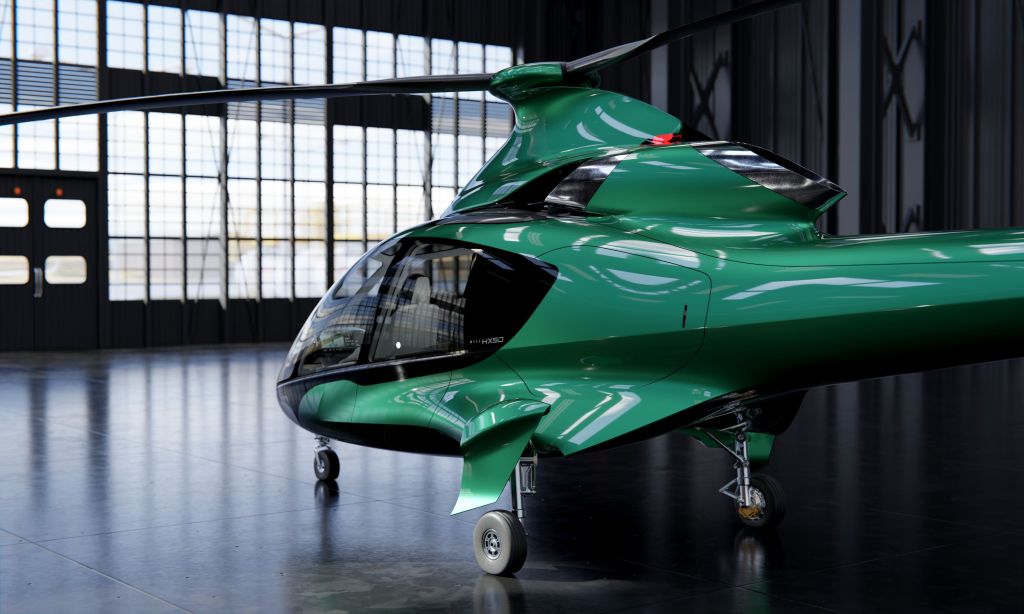An innovative approach to helicopter design

By utilising a suite of PTC products, including Creo, Windchill and Mathcad – innovative start-up Hill Helicopters will deliver its first helicopter within three years.
Based in Staffordshire, Hill Helicopters is on a mission to shake up the staid and risk-averse personal helicopter market. The objective is to deliver a high-technology rotorcraft to a market segment that is traditionally short on innovation. Not only that, the helicopter will be designed and manufactured in-house at a custom production facility. But the real kicker is that the first helicopter will be delivered in just three years from launch.
The initial offering is the HX50 that Jason Hill, owner and founder of Hill Helicopters, believes will position the brand on the cutting edge in design and engineering, updating helicopter standards to rival the exclusivity and luxury seen in top automotive marques.
“The immediate vision is a 335,000ft2 factory employing 500 people making 500 helicopters a year,” he says. “We will use various scalable technologies to make bigger and more sophisticated helicopters and ultimately other aircraft types.”

Hill Helicopters is building an organisation to manufacture approved aircraft to the tightest standards. That means that its business processes, change control processes, bills of materials, and everything that goes into controlling what happens at every level of the business is of vital importance. Numerous facets have technical risks associated with them and demand that the digital backbone on which work is carried out is reliable and robust.
To achieve this, Hill Helicopters opted to standardise on PTC software solutions for CAD and PLM delivered through PTC partner Concurrent Engineering.
“What PTC and Creo offer is a robust and proven CAD system that we can rely on,” Hill says. “It is expandable and will grow with us. It also has solid integrations with our Windchill PLM system that allows us to lock down all the control that we need about data to go through all of the approvals along the road. You need your tools to be there in your toolbox and not let you down when you need them. And that is how we see Creo with PTC.”
As a new and growing company, managing costs are a crucial factor, and here the subscription model for the software, as opposed to outright purchase, was a significant advantage.
Size and complexity
Hill was clear about the basic parameters of the aircraft. It must have the ability to carry five 95kg passengers along with fuel for a three-hour trip and fly at 140 knots. There are several factors integral to the design of the HX50. The starting point was the tadpole shape, adopted by most rotorcraft because of its aerodynamic efficiency. Then it was a matter of placing the right components in the right places and working out how to hide them. To achieve this within the constricting timeframe required a different way of working that utilised the digital tools available to today’s manufacturing companies.
When Craig Jones joined Hill Helicopters as lead mechanical engineer, the company was using a different CAD system. However, from his experience, he knew that the CAD system would not handle the large complex models required to produce this product.
“I made the recommendation to move to Creo,” he explains. “I know Creo is excellent for use in large assemblies and a great surfacing tool, which we need here. It is also great at helping us to engineer the product, not just draw it up.
“We knew the specifications, and from those almost fundamental points, you can start to lay out the bones of the design. You are always trying to push the limits of what you can do. And then, tools like Mathcad help you quickly iterate designs and get to a point where you can start to scale things up. With Creo linked to our PLM system Windchill, it gives us complete control over everything we do.”
The ability to conduct accurate simulations was also important. The more simulation that can be performed across every stage of the design means that you need less testing and can bring the product to market quicker. A crucial consideration given that time was of the essence within the three-year timeframe. Equally important was the ability to minimise the costs of tests. Carrying out simulations gives them a higher confidence that the expensive tests required to meet the stringent regulations could be passed the first time.
Working in partnership
Concurrent Engineering has worked with Hill Helicopters to develop a scope of work that was mainly set by the certification team around the requirements of the CAA, EASA and other aviation authorities. They then developed those into deliverable processes within the Windchill environment to allow Hill Helicopters to deliver highly controlled, high-quality components, subsystems and, ultimately, aircraft.
“We are a new business, and we want to work in as modern a way as possible,” Hill concludes. “We are using a lot of model-based definition in design, which will follow through from CAM and CMM software, and that can all be tied together on our digital backbone.”
Concurrent Engineering has developed a roadmap view that charts the path for Hill Helicopters on its digital journey and what can be achieved in the long term. The entire strategy was staggered as it would be too burdensome for a small company to roll it all out at once. The first stage was a CAD management tool, which has been working well. The second stage, which is currently underway, is to incorporate Bill of Material (BOM) management and change control that will allow it to meet CAA requirements for controlling the product. From that point onwards there are numerous other tools in the suite to look to, and they know it is on the roadmap for the future.












